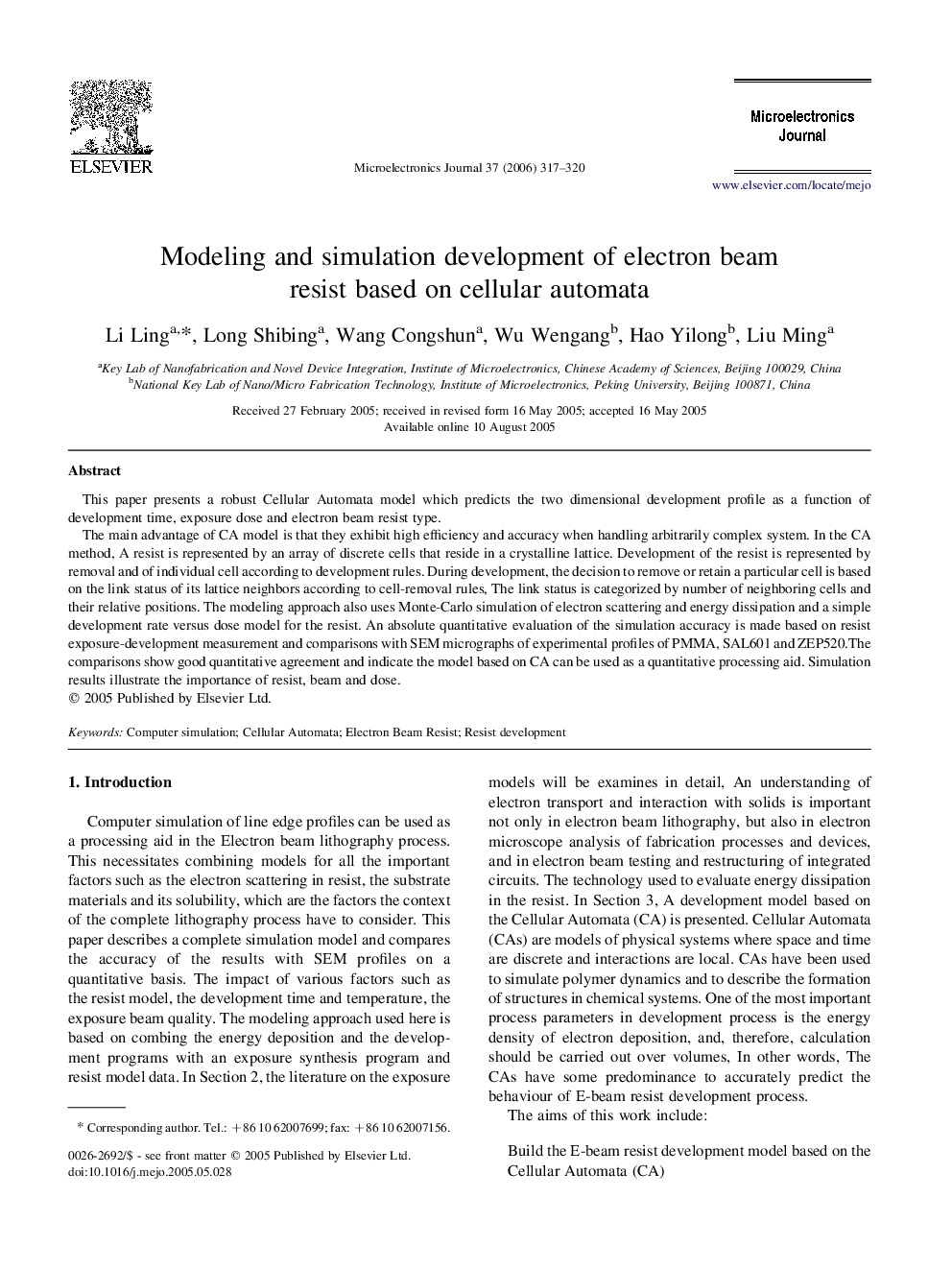| Article ID | Journal | Published Year | Pages | File Type |
|---|---|---|---|---|
| 544170 | Microelectronics Journal | 2006 | 4 Pages |
This paper presents a robust Cellular Automata model which predicts the two dimensional development profile as a function of development time, exposure dose and electron beam resist type.The main advantage of CA model is that they exhibit high efficiency and accuracy when handling arbitrarily complex system. In the CA method, A resist is represented by an array of discrete cells that reside in a crystalline lattice. Development of the resist is represented by removal and of individual cell according to development rules. During development, the decision to remove or retain a particular cell is based on the link status of its lattice neighbors according to cell-removal rules, The link status is categorized by number of neighboring cells and their relative positions. The modeling approach also uses Monte-Carlo simulation of electron scattering and energy dissipation and a simple development rate versus dose model for the resist. An absolute quantitative evaluation of the simulation accuracy is made based on resist exposure-development measurement and comparisons with SEM micrographs of experimental profiles of PMMA, SAL601 and ZEP520.The comparisons show good quantitative agreement and indicate the model based on CA can be used as a quantitative processing aid. Simulation results illustrate the importance of resist, beam and dose.
